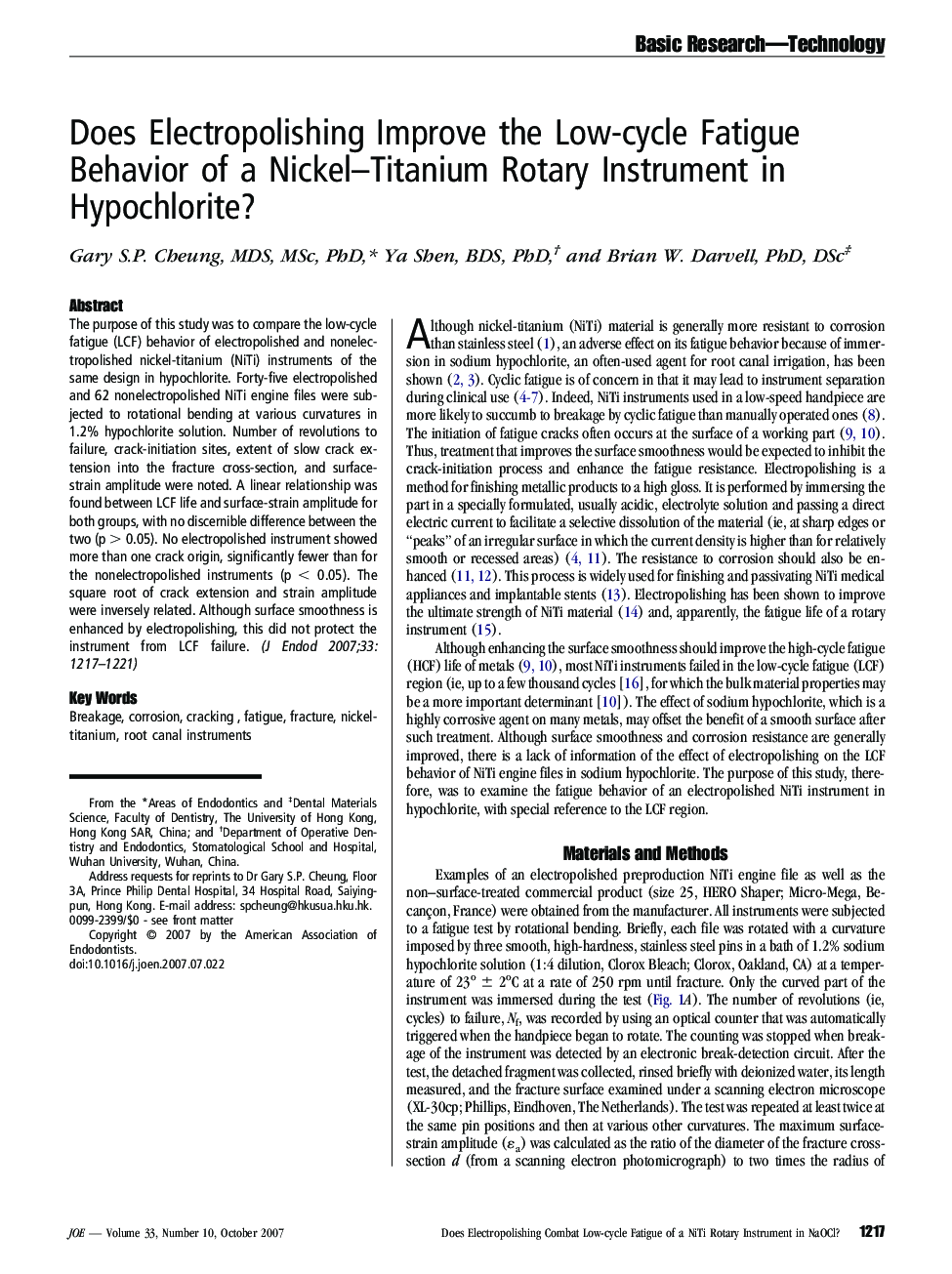| Article ID | Journal | Published Year | Pages | File Type |
|---|---|---|---|---|
| 3149812 | Journal of Endodontics | 2007 | 5 Pages |
The purpose of this study was to compare the low-cycle fatigue (LCF) behavior of electropolished and nonelectropolished nickel-titanium (NiTi) instruments of the same design in hypochlorite. Forty-five electropolished and 62 nonelectropolished NiTi engine files were subjected to rotational bending at various curvatures in 1.2% hypochlorite solution. Number of revolutions to failure, crack-initiation sites, extent of slow crack extension into the fracture cross-section, and surface-strain amplitude were noted. A linear relationship was found between LCF life and surface-strain amplitude for both groups, with no discernible difference between the two (p > 0.05). No electropolished instrument showed more than one crack origin, significantly fewer than for the nonelectropolished instruments (p < 0.05). The square root of crack extension and strain amplitude were inversely related. Although surface smoothness is enhanced by electropolishing, this did not protect the instrument from LCF failure.
